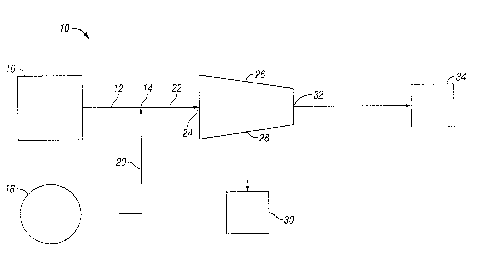Some of the information on this Web page has been provided by external sources. The Government of Canada is not responsible for the accuracy, reliability or currency of the information supplied by external sources. Users wishing to rely upon this information should consult directly with the source of the information. Content provided by external sources is not subject to official languages, privacy and accessibility requirements.
Any discrepancies in the text and image of the Claims and Abstract are due to differing posting times. Text of the Claims and Abstract are posted:
| (12) Patent: | (11) CA 2602685 |
|---|---|
| (54) English Title: | METHOD AND APPARATUS FOR CENTRIFUGAL SEPARATION ENHANCEMENT |
| (54) French Title: | PROCEDE ET APPAREIL D'AMELIORATION DE LA SEPARATION CENTRIFUGE |
| Status: | Granted and Issued |
| (51) International Patent Classification (IPC): |
|
|---|---|
| (72) Inventors : |
|
| (73) Owners : |
|
| (71) Applicants : |
|
| (74) Agent: | FINLAYSON & SINGLEHURST |
| (74) Associate agent: | |
| (45) Issued: | 2013-07-16 |
| (86) PCT Filing Date: | 2006-04-11 |
| (87) Open to Public Inspection: | 2006-10-19 |
| Examination requested: | 2011-02-22 |
| Availability of licence: | N/A |
| Dedicated to the Public: | N/A |
| (25) Language of filing: | English |
| Patent Cooperation Treaty (PCT): | Yes |
|---|---|
| (86) PCT Filing Number: | PCT/US2006/013351 |
| (87) International Publication Number: | WO 2006110675 |
| (85) National Entry: | 2007-09-28 |
| (30) Application Priority Data: | ||||||
|---|---|---|---|---|---|---|
|
A method for removing low gravity solids from an oil-based drilling fluid
includes directing the drilling fluid into a first inlet of a first line in
fluid communication with a centrifuge, injecting steam into the drilling fluid
through a second inlet in the first line, wherein the second inlet is upstream
from the centrifuge, directing the commingled drilling fluid and steam into
the centrifuge, rotating the centrifuge at a rotational speed sufficient to
separate solids from liquids, collecting solids from a solids discharge, and
collecting effluent from an effluent outlet, wherein the effluent has low
gravity solids in an amount less than 1.5%.
L'invention concerne un procédé d'élimination de solides à faible gravité provenant de boues de forage à base d'huile consistant à orienter les boues de forage dans une première entrée d'une première ligne en communication par voie fluide avec une centrifugeuse, à injecter de la vapeur dans les boues de forage à travers une seconde entrée ménagée dans la première ligne, la seconde entrée étant en amont de la centrifugeuse, à orienter les boues de forage et la vapeur mélangées dans la centrifugeuse, à faire tourner la centrifugeuse à une vitesse rotative suffisante pour séparer les solides des liquides, à collecter les solides à partir d'une décharge de solides et à collecter l'effluent à partir d'une sortie d'effluent, l'effluent présentant des solides à faible gravité en quantité inférieure à 1,5 %.
Note: Claims are shown in the official language in which they were submitted.
Note: Descriptions are shown in the official language in which they were submitted.

2024-08-01:As part of the Next Generation Patents (NGP) transition, the Canadian Patents Database (CPD) now contains a more detailed Event History, which replicates the Event Log of our new back-office solution.
Please note that "Inactive:" events refers to events no longer in use in our new back-office solution.
For a clearer understanding of the status of the application/patent presented on this page, the site Disclaimer , as well as the definitions for Patent , Event History , Maintenance Fee and Payment History should be consulted.
| Description | Date |
|---|---|
| Maintenance Fee Payment Determined Compliant | 2021-05-05 |
| Inactive: Late MF processed | 2021-05-05 |
| Common Representative Appointed | 2019-10-30 |
| Common Representative Appointed | 2019-10-30 |
| Grant by Issuance | 2013-07-16 |
| Inactive: Cover page published | 2013-07-15 |
| Pre-grant | 2013-04-30 |
| Inactive: Final fee received | 2013-04-30 |
| Notice of Allowance is Issued | 2012-11-01 |
| Letter Sent | 2012-11-01 |
| Notice of Allowance is Issued | 2012-11-01 |
| Inactive: Approved for allowance (AFA) | 2012-10-30 |
| Amendment Received - Voluntary Amendment | 2012-07-26 |
| Inactive: S.30(2) Rules - Examiner requisition | 2012-02-03 |
| Letter Sent | 2011-04-26 |
| Reinstatement Requirements Deemed Compliant for All Abandonment Reasons | 2011-04-15 |
| Deemed Abandoned - Failure to Respond to Maintenance Fee Notice | 2011-04-11 |
| Letter Sent | 2011-03-01 |
| Request for Examination Received | 2011-02-22 |
| Request for Examination Requirements Determined Compliant | 2011-02-22 |
| All Requirements for Examination Determined Compliant | 2011-02-22 |
| Inactive: Cover page published | 2007-12-14 |
| Inactive: Notice - National entry - No RFE | 2007-12-12 |
| Inactive: First IPC assigned | 2007-10-27 |
| Application Received - PCT | 2007-10-26 |
| National Entry Requirements Determined Compliant | 2007-09-28 |
| Application Published (Open to Public Inspection) | 2006-10-19 |
| Abandonment Date | Reason | Reinstatement Date |
|---|---|---|
| 2011-04-11 |
The last payment was received on 2013-03-27
Note : If the full payment has not been received on or before the date indicated, a further fee may be required which may be one of the following
Please refer to the CIPO Patent Fees web page to see all current fee amounts.
Note: Records showing the ownership history in alphabetical order.
| Current Owners on Record |
|---|
| M-I L.L.C. |
| Past Owners on Record |
|---|
| CATALIN IVAN |
| NEALE BROWNE |